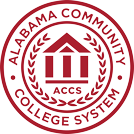MONTGOMERY, Ala. – An additional $5 million awarded by the Alabama Legislature for dual enrollment opportunities at Alabama’s community colleges will continue to increase the number of students who benefit from college classes while still in high school. In many cases – such as with Calhoun Community College alum Lucas Hasting and Central Alabama Community College alum Katelyn Henderson – high school students are graduating with their associate degree either before or shortly after earning their high school diploma.
The additional dual enrollment funds for students at Alabama’s community colleges were approved by the State Legislature and signed by Gov. Kay Ivey in the largest education budget in state history in April. Last year, funds approved by the Legislature were used to help expand dual enrollment scholarships to high school students interested in taking college-level science, technology, engineering and math (STEM) courses through their local community college.
The increase in funds aligned with an increase in enrollment. In Fall 2021 when the scholarships were first announced, 16,462 students took advantage of dual enrollment opportunities through Alabama’s community colleges. This represented a 15.23% increase from Fall 2020, when 14,286 high school students took dual enrollment classes.
“When you have a program that is working by advancing Alabama’s workforce training for residents from as early as high school age, you keep growing that program so that as many who are willing can use those resources to change their lives and their family trajectory,” said Alabama Community College System (ACCS) Chancellor Jimmy H. Baker. “We appreciate the Legislature, community and business partners, counselors, educators and others that contribute to making a difference in our communities by supporting dual enrollment.”
Since 2015, there has been a more than 65-percent increase in dually enrolled high school students at Alabama’s community colleges.
Dual enrollment gives Alabama’s high school students access to college-level classes that apply to credit in both high school and college at the same time. Unlike AP honors classes in high school, a student’s grades for dual enrollment classwork are the only factor in determining whether the student receives full college credit for the class. The dual enrollment classes are delivered through a variety of methods, including high school students attending the local college in-person or online, or through a college instructor traveling to the local high school or career center to teach.
Dual enrollment students like Hasting, 18, of Decatur, can graduate college before high school. Hasting recently obtained an Associate of Applied Science degree in Information Technology with a concentration in Cyber Security from Calhoun Community College.
“I knew how important this would be for not only my high school goals but also my future career in cyber security,” Hasting said.
Katelyn Henderson, a Benjamin Russell High School senior who graduated from Central Alabama Community College (CACC) on May 6 and is expected to graduate from her high school May 27, said she chose dual enrollment at CACC for the chance to gain a college experience before graduating high school and transferring, and because of the affordability. Classes at Alabama’s community colleges are generally less than half the cost of the same classes at Alabama’s public four-year universities.
“It’s cheaper than most universities and I was trying to help save my parents some money,” she said. “My experience has been really great. I’ve done well with all my classes, enjoyed all my teachers. It’s a lot of hard work, but I’ve enjoyed it so far.”
Two Coastal Alabama Community College dual enrollment welding students, Antonio Notarangelo and John Pizzotti, both graduating seniors at Fairhope High School, have earned enough credits for six short-term welding certifications. According to the college, the two have collectively saved around $7,000 in college tuition and are prepared to go straight into the workforce.
Dual enrollment scholarships at Alabama’s community colleges cover 22 science, 18 computer science, and 17 math classes and more than 450 career pathway courses. For students at participating high schools, scholarships are available for two classes per student, per semester during the high school academic school year in the fall and spring and up to four classes during the summer term if their high school district allows summer classes.
Dual enrollment scholarships cover tuition, fees and textbooks.
Students must generally have a 2.5 GPA in academic work to qualify for the dual enrollment scholarships. More information is available at students’ local community college.
